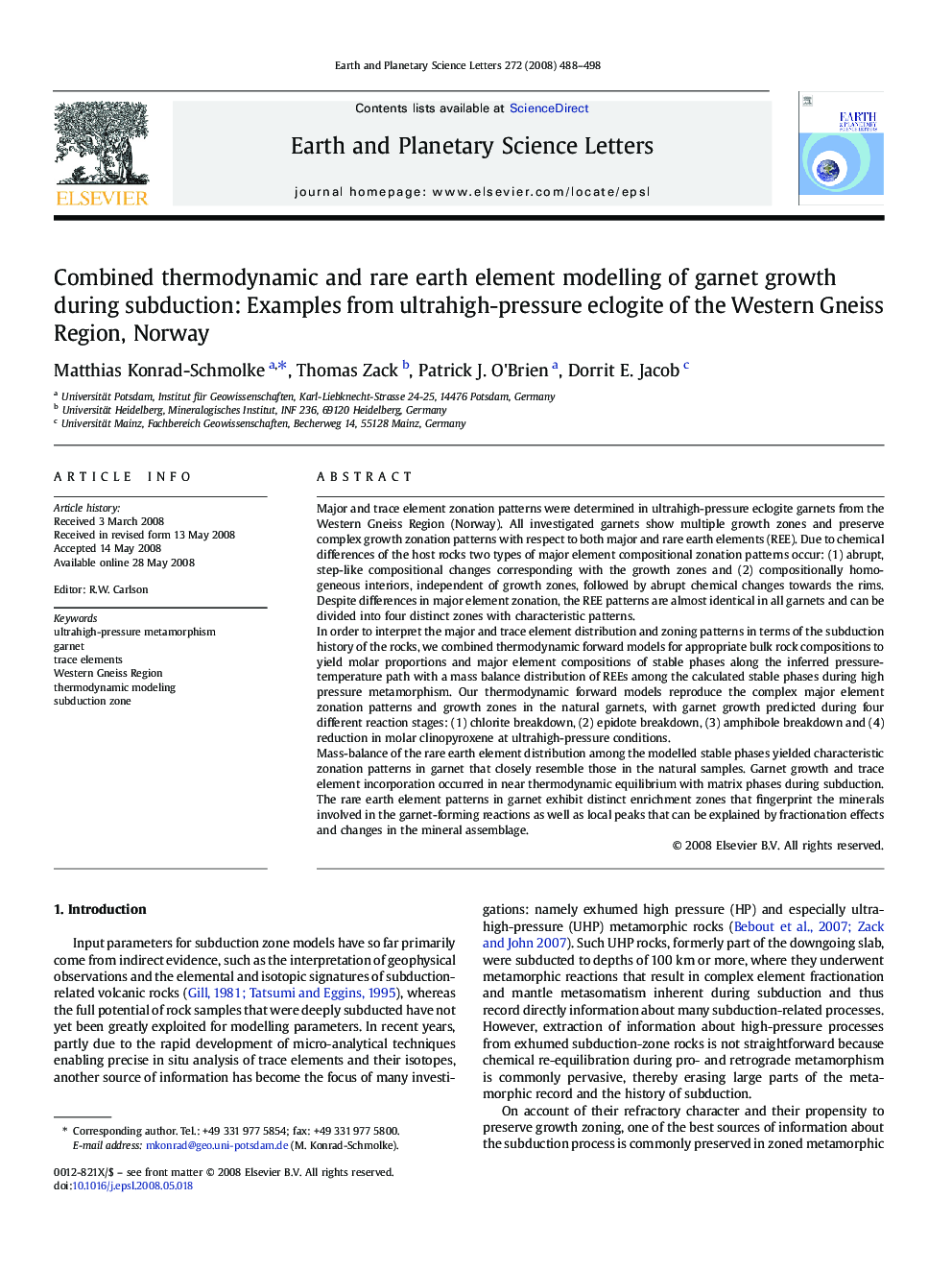| Article ID | Journal | Published Year | Pages | File Type |
|---|---|---|---|---|
| 4679726 | Earth and Planetary Science Letters | 2008 | 11 Pages |
Major and trace element zonation patterns were determined in ultrahigh-pressure eclogite garnets from the Western Gneiss Region (Norway). All investigated garnets show multiple growth zones and preserve complex growth zonation patterns with respect to both major and rare earth elements (REE). Due to chemical differences of the host rocks two types of major element compositional zonation patterns occur: (1) abrupt, step-like compositional changes corresponding with the growth zones and (2) compositionally homogeneous interiors, independent of growth zones, followed by abrupt chemical changes towards the rims. Despite differences in major element zonation, the REE patterns are almost identical in all garnets and can be divided into four distinct zones with characteristic patterns.In order to interpret the major and trace element distribution and zoning patterns in terms of the subduction history of the rocks, we combined thermodynamic forward models for appropriate bulk rock compositions to yield molar proportions and major element compositions of stable phases along the inferred pressure-temperature path with a mass balance distribution of REEs among the calculated stable phases during high pressure metamorphism. Our thermodynamic forward models reproduce the complex major element zonation patterns and growth zones in the natural garnets, with garnet growth predicted during four different reaction stages: (1) chlorite breakdown, (2) epidote breakdown, (3) amphibole breakdown and (4) reduction in molar clinopyroxene at ultrahigh-pressure conditions.Mass-balance of the rare earth element distribution among the modelled stable phases yielded characteristic zonation patterns in garnet that closely resemble those in the natural samples. Garnet growth and trace element incorporation occurred in near thermodynamic equilibrium with matrix phases during subduction. The rare earth element patterns in garnet exhibit distinct enrichment zones that fingerprint the minerals involved in the garnet-forming reactions as well as local peaks that can be explained by fractionation effects and changes in the mineral assemblage.
